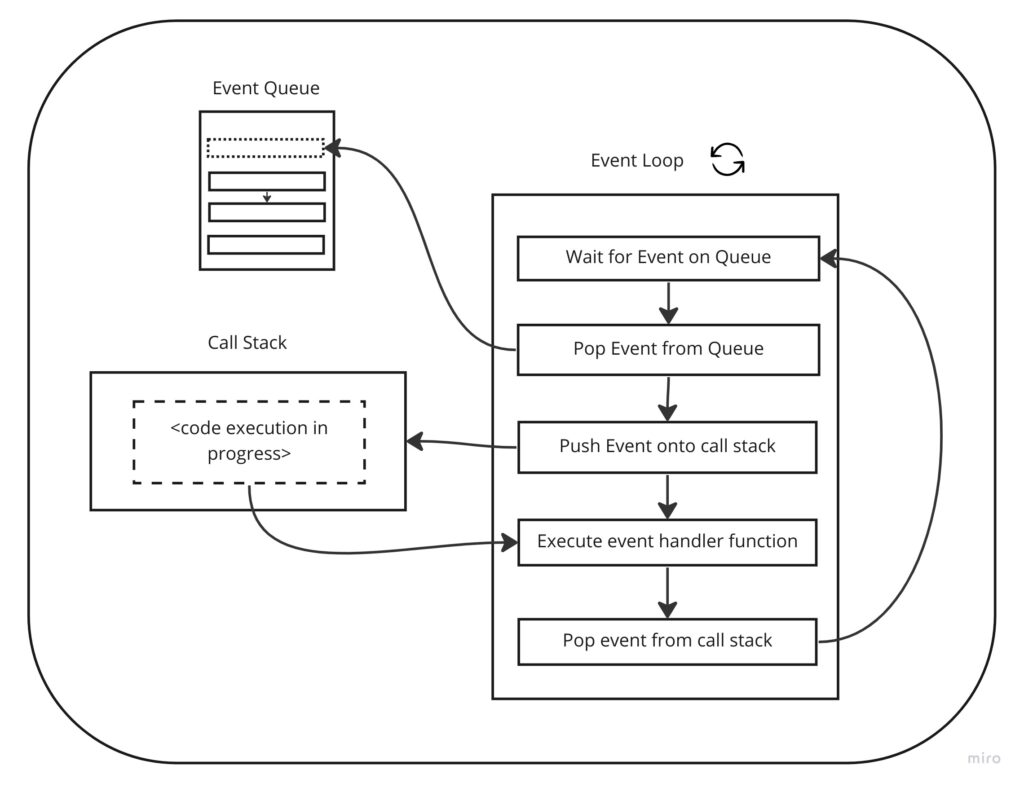Node.js is a powerful and popular runtime environment for executing JavaScript code on the server-side. One of its most notable features is its single threaded architecture.
This means that Node.js runs on a single thread, which can process only one task at a time. However, it uses an event-driven, non-blocking I/O model that allows it to handle a large number of concurrent requests with ease.
In this article, we will take a closer look at how Node.js’ single threaded architecture works and how it enables it to handle high traffic loads efficiently.
What is Node.js’ Single Threaded Architecture?
Node.js’ single threaded architecture means that all the code that runs in Node.js runs on a single thread. This is different from traditional server-side platforms, like Apache, which spawn a new thread for every incoming request. This approach, however, can lead to scalability issues as the number of threads increases, resulting in high resource consumption and slower response times.
Instead, Node.js uses an event-driven, non-blocking I/O model, which allows it to perform I/O operations asynchronously without blocking the execution of the main thread. This model enables Node.js to handle a large number of concurrent requests with minimal resource consumption.
How does Node.js’ Single Threaded Architecture work?
At the core of Node.js’ single threaded architecture is the event loop. The event loop is a loop that continuously listens for events and executes their associated callback functions. When Node.js receives an event, it adds it to a queue and then moves on to the next event. This allows Node.js to process events in a non-blocking manner and execute them in the order they were received.
The event loop is composed of two main components: the event queue and the call stack. The event queue holds all the events that are waiting to be processed, while the call stack holds the functions that are currently being executed.

When Node.js starts, it initializes the event loop and enters a waiting state. As soon as an event is received, it is added to the event queue. The event loop then checks the call stack to see if there are any functions that are currently being executed. If the call stack is empty, the event loop retrieves the first event from the event queue and executes its associated callback function.
When the callback function is executed, any I/O operations are sent to the system’s I/O facilities, such as the network or file system. These I/O operations are performed asynchronously and do not block the execution of the main thread. Once the I/O operation is complete, the event loop retrieves the next event from the event queue and repeats the process.
Advantages of Node.js’ Single Threaded Architecture
Node.js’ single threaded architecture offers several advantages over traditional server-side platforms:
- Scalability – Node.js’ single threaded architecture enables it to handle a large number of concurrent requests with minimal resource consumption.
- Speed – Node.js’ event-driven, non-blocking I/O model allows it to process I/O operations faster, resulting in faster response times.
- Efficiency – Node.js’ single threaded architecture reduces resource consumption and improves efficiency, making it an ideal choice for high traffic applications.
Conclusion
Node.js’ single threaded architecture may seem counterintuitive at first, but it is a powerful and efficient approach to server-side programming. Its event-driven, non-blocking I/O model allows it to handle a large number of concurrent requests with ease, making it an ideal choice for high traffic applications. We hope this article has helped demystify Node.js’ single threaded architecture and provided you with a better understanding of how it works.